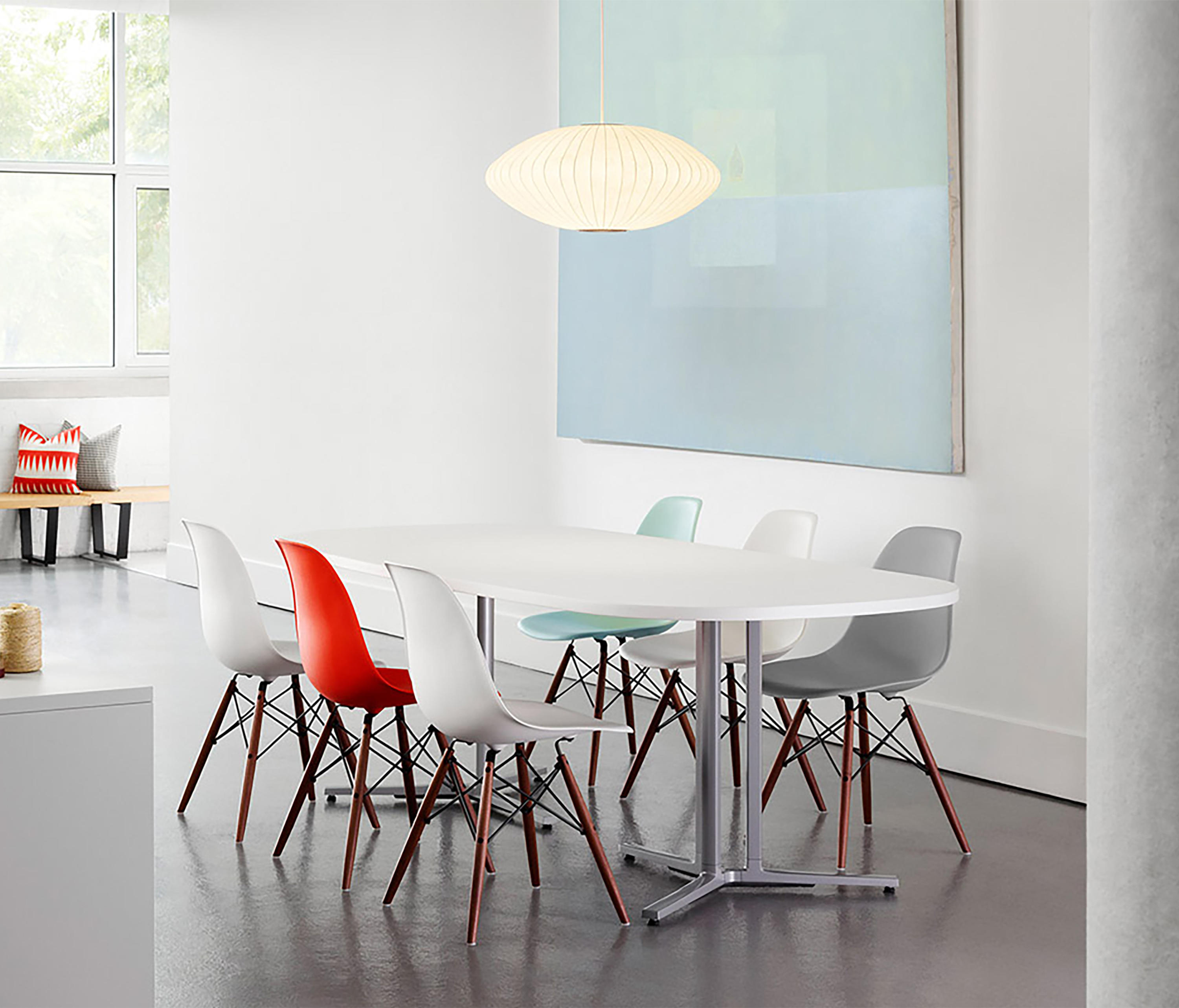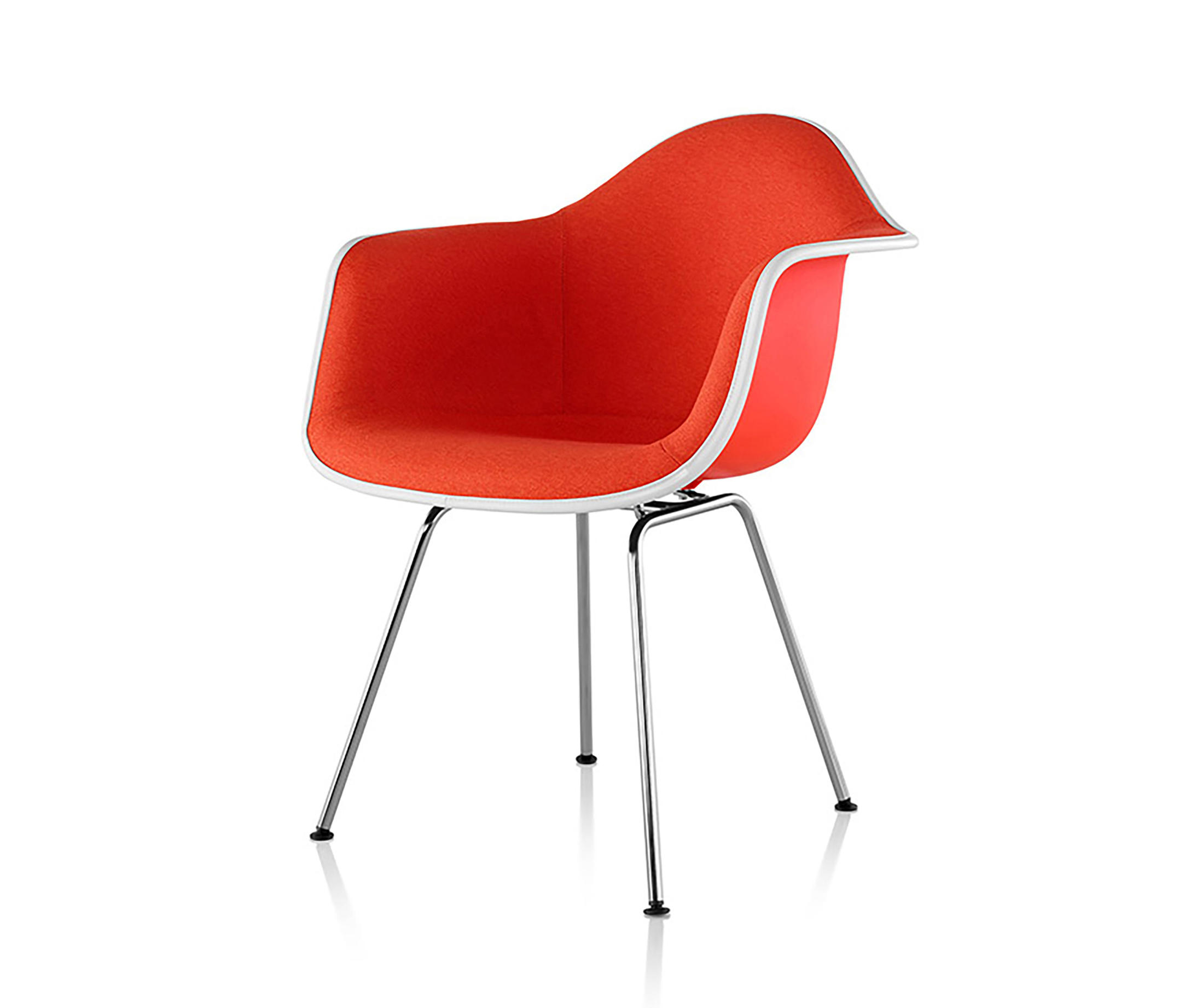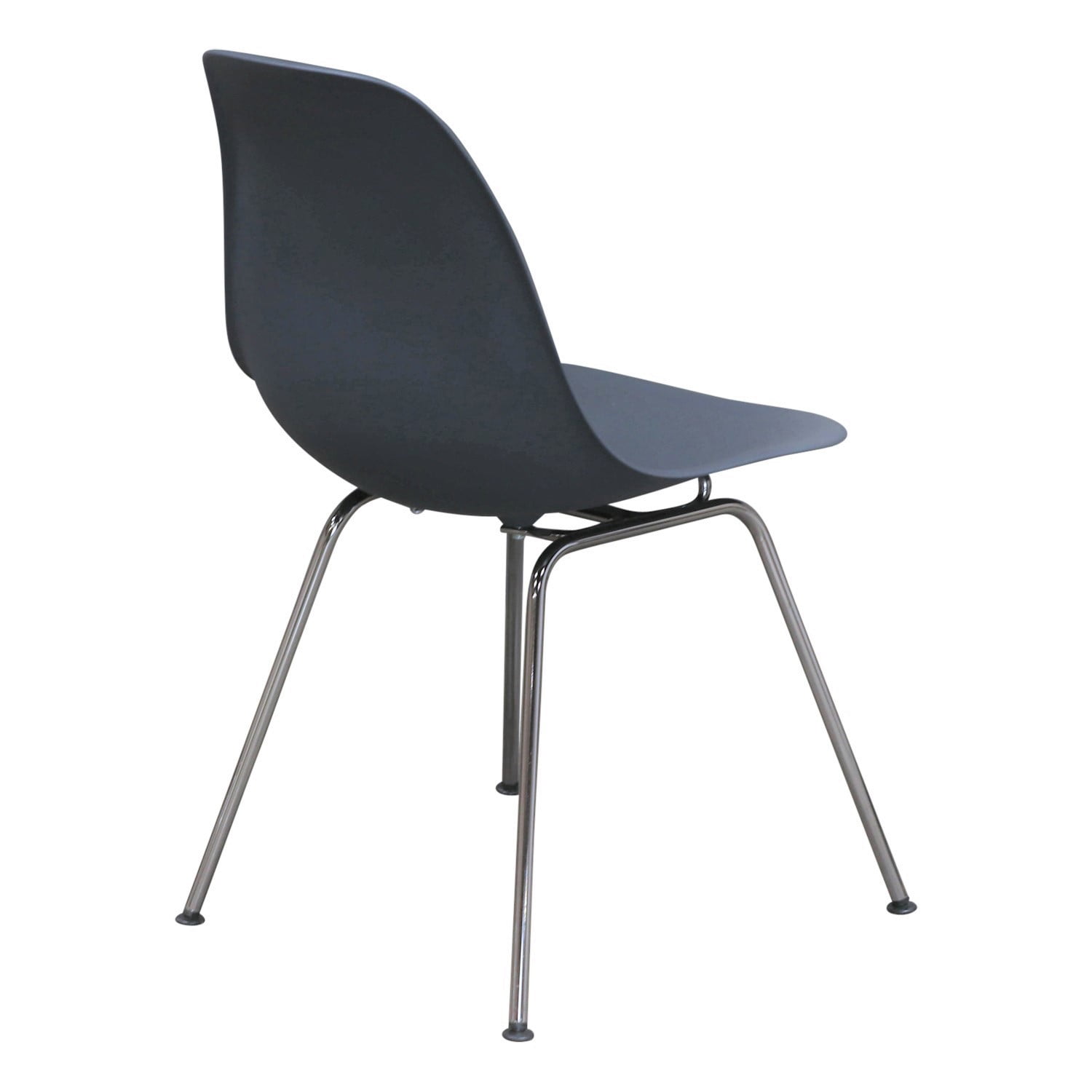Herman Miller Plastic Chair History

The Herman Miller Plastic Chair has a rich history, evolving from humble beginnings to become an iconic design staple. Its journey reflects the evolution of design philosophy and the changing needs of the modern workplace.
Early Models and Their Impact
The story begins in the 1950s with the groundbreaking Eames Plastic Chair. Designed by Charles and Ray Eames, this chair marked a significant departure from traditional furniture design. It was one of the first mass-produced chairs made entirely of plastic, a material that was then considered revolutionary. The Eames Plastic Chair’s simple, elegant form and affordability made it an instant success, becoming a symbol of modern design and democratizing good design for the masses. The chair’s popularity was further amplified by its versatility, with multiple base options allowing it to be used in a variety of settings, from dining rooms to offices.
“The Eames Plastic Chair was a landmark in furniture design, proving that plastic could be used to create functional and aesthetically pleasing chairs.” – Design Historian
- The Eames Plastic Chair’s success paved the way for other plastic chairs to emerge, influencing designers to explore new possibilities with this material.
- The chair’s impact extended beyond its aesthetic appeal, demonstrating the potential of mass production and the accessibility of design to a wider audience.
Design Philosophy and Evolution
The design philosophy behind Herman Miller’s plastic chairs has consistently emphasized functionality, durability, and aesthetics. The chairs are designed to be comfortable, lightweight, and easy to clean, making them suitable for a variety of environments.
- Early models, like the Eames Plastic Chair, focused on simplicity and minimalism, reflecting the mid-century modern aesthetic.
- Later models, such as the Aeron Chair, introduced more advanced features and technologies, incorporating ergonomic principles and innovative materials.
- The design philosophy has evolved to incorporate sustainability and environmental considerations, with Herman Miller using recycled materials and minimizing their environmental footprint.
Iconic Models and Their Features
Herman Miller’s plastic chairs have achieved iconic status, celebrated for their innovative designs, enduring quality, and versatility. They have become staples in homes, offices, and public spaces around the world, showcasing the company’s commitment to functional and aesthetically pleasing designs.
The Eames Plastic Chair
The Eames Plastic Chair, designed by Charles and Ray Eames in 1950, is a testament to the power of simplicity and functionality. This chair was a groundbreaking achievement in plastic molding technology and became a symbol of modern design.
The Eames Plastic Chair features a single-piece, molded polypropylene shell, available in a variety of vibrant colors. Its signature design elements include:
- Organic Shape: The shell’s curved form provides comfort and support, mimicking the natural contours of the human body.
- Stackability: The chairs are designed to stack, making them ideal for storage and space-saving solutions.
- Versatility: The Eames Plastic Chair can be paired with various bases, including wire, wood, and sled bases, offering diverse aesthetic and functional options.
The Eames Plastic Chair’s versatility has made it a popular choice for a wide range of settings. From its use in iconic spaces like the New York Museum of Modern Art to its presence in countless homes and offices, this chair has become a timeless design classic.
Material and Manufacturing Process

The Herman Miller plastic chair’s success lies not only in its iconic design but also in the innovative use of materials and the meticulous manufacturing process. The company has always been at the forefront of material science and manufacturing technology, ensuring the chairs are durable, comfortable, and aesthetically pleasing.
Plastic Types
The choice of plastic is crucial for the chair’s functionality and longevity. Herman Miller utilizes various types of plastics, each with specific properties that contribute to the chair’s overall performance.
- Polypropylene (PP): A widely used thermoplastic known for its strength, flexibility, and resistance to chemicals. It’s commonly used in the chair’s base and shell, providing a durable and lightweight structure.
- Acrylonitrile Butadine Styrene (ABS): This thermoplastic is known for its impact resistance and dimensional stability. It’s often used for chair arms and other components that require a high level of durability.
- Polyethylene (PE): This flexible and durable plastic is often used for the chair’s upholstery, providing a comfortable and long-lasting surface.
Manufacturing Process
The manufacturing process for Herman Miller plastic chairs is a testament to the company’s commitment to quality and efficiency. It involves several steps, each meticulously designed to ensure the chair meets the highest standards.
- Design and Prototyping: The design process starts with a team of engineers and designers who create prototypes using computer-aided design (CAD) software. This allows for virtual testing and refinement before actual production.
- Mold Creation: Once the design is finalized, a mold is created using precision machining techniques. The mold is used to shape the plastic components of the chair, ensuring consistent quality and accuracy.
- Injection Molding: The plastic material is heated to a molten state and injected into the mold under high pressure. The plastic cools and solidifies within the mold, taking the desired shape.
- Assembly: The molded components are then assembled using a variety of techniques, including snap-fit assembly and mechanical fasteners. This process ensures a robust and durable chair.
- Quality Control: Throughout the manufacturing process, rigorous quality control measures are implemented to ensure that each chair meets Herman Miller’s high standards.
Benefits and Drawbacks of Plastic
Plastic has revolutionized furniture design, offering numerous advantages over traditional materials. However, it also comes with certain drawbacks.
- Benefits:
- Durability: Plastic is known for its strength and resilience, making it suitable for high-traffic areas and demanding environments.
- Lightweight: Plastic chairs are significantly lighter than chairs made from traditional materials, making them easier to move and transport.
- Versatility: Plastic can be molded into various shapes and sizes, allowing for a wide range of design possibilities.
- Cost-Effectiveness: Plastic is generally less expensive than other materials, making it an attractive option for furniture manufacturers.
- Recyclability: Many types of plastics are recyclable, making them a more sustainable choice than some traditional materials.
- Drawbacks:
- Environmental Impact: The production of plastic can have a significant environmental impact, including the release of greenhouse gases and the generation of waste.
- Durability Concerns: While plastic is durable, it can be susceptible to scratches, dents, and discoloration over time, especially with prolonged exposure to sunlight or harsh chemicals.
- Comfort: Plastic chairs can sometimes feel cold and uncomfortable, especially in colder climates.
Impact on Design and Culture

The Herman Miller plastic chair has transcended its function as mere seating to become a cultural icon, influencing design trends and permeating popular culture. Its enduring presence in art, film, and literature testifies to its profound impact on the visual landscape of the 20th and 21st centuries.
Influence on Design Trends
The Herman Miller plastic chair’s minimalist design and innovative use of materials sparked a revolution in furniture design. Its clean lines, simple form, and focus on functionality became hallmarks of modernism, influencing countless designers and shaping the aesthetics of homes, offices, and public spaces.
The chair’s success can be attributed to its versatility, adaptability, and enduring appeal. It seamlessly integrates into diverse environments, from the sleek interiors of corporate offices to the casual settings of homes and cafes. This adaptability has contributed to its widespread adoption and enduring influence on design trends.
Sustainability and Environmental Considerations: Herman Miller Plastic Chair

The widespread adoption of plastic chairs has brought about concerns regarding their environmental impact, particularly in terms of production and disposal. While plastic offers numerous benefits, such as durability and affordability, its production and lifecycle have significant implications for the planet.
Environmental Impact of Plastic Chair Production
The production of plastic chairs, like most plastic products, has a substantial environmental footprint. This impact stems from various factors, including:
- Fossil Fuel Consumption: Plastic is derived from fossil fuels, primarily petroleum and natural gas. The extraction, processing, and transportation of these resources consume significant amounts of energy and release greenhouse gases into the atmosphere, contributing to climate change.
- Greenhouse Gas Emissions: The manufacturing process of plastic chairs involves high-energy consumption, leading to emissions of greenhouse gases such as carbon dioxide, methane, and nitrous oxide. These emissions contribute to global warming and climate change.
- Water Consumption: The production of plastic chairs requires substantial water resources for various stages, including raw material extraction, processing, and cleaning. This can strain water resources, particularly in water-scarce regions.
- Waste Generation: Plastic chairs, if not properly disposed of, can end up in landfills, where they can persist for hundreds of years, contributing to land pollution and releasing harmful chemicals into the environment.
Herman Miller’s Sustainability Efforts
Herman Miller, a leading furniture manufacturer, has recognized the environmental impact of its products and has implemented various sustainability initiatives. These efforts include:
- Sustainable Material Sourcing: Herman Miller prioritizes the use of recycled and renewable materials in its products, including recycled plastic, sustainably harvested wood, and bio-based materials. The company has set ambitious goals for increasing the use of recycled content in its products, aiming to reduce reliance on virgin materials.
- Efficient Manufacturing Processes: Herman Miller strives to optimize its manufacturing processes to minimize waste and energy consumption. This includes implementing lean manufacturing techniques, reducing material waste, and improving energy efficiency in its factories.
- Product Design for Sustainability: Herman Miller incorporates sustainability considerations into its product design, focusing on durability, repairability, and recyclability. The company aims to create products that last longer and can be easily repaired or recycled at the end of their life cycle.
- End-of-Life Management: Herman Miller promotes responsible disposal and recycling of its products. The company offers take-back programs for its products and collaborates with recycling partners to ensure that materials are properly recycled or reused.
Future of Plastic Furniture in a Sustainable World, Herman miller plastic chair
The future of plastic furniture in a sustainable world will depend on advancements in material science, manufacturing processes, and consumer behavior. Here are some key considerations:
- Bio-Based Plastics: Research and development in bio-based plastics, derived from renewable resources such as plants and algae, offer a promising alternative to fossil fuel-based plastics. These bio-based plastics can reduce reliance on fossil fuels and have a lower environmental impact. Examples include polylactic acid (PLA) and polyhydroxyalkanoates (PHAs).
- Recyclable and Reusable Plastics: Advancements in plastic recycling technologies are crucial for reducing plastic waste. Development of new recycling methods that can effectively process complex plastic mixtures, such as those found in furniture, will be essential. Additionally, the design of plastic furniture that is easily disassembled and recycled will be critical.
- Circular Economy: Embracing a circular economy model for plastic furniture, where products are designed for reuse, repair, and recycling, can significantly reduce environmental impact. This model emphasizes keeping materials in use for as long as possible, minimizing waste generation and resource depletion.
- Consumer Awareness and Demand: Consumers play a vital role in driving sustainability in the furniture industry. Increasing awareness of the environmental impact of plastic furniture and demanding sustainable options from manufacturers can influence industry practices and promote innovation in sustainable design and production.
Sure, the Herman Miller plastic chair is great for a minimalist look, but let’s be real – it’s about as comfy as a rock. If you’re looking for some serious relaxation, you need to check out the swings n things hammock chair.
It’s like a warm hug from a cloud! You’ll be so comfy you might forget you ever even owned a Herman Miller chair.
Okay, so you’re all about that minimalist, industrial chic vibe with your Herman Miller plastic chair, right? But let’s be real, sometimes you need a little bit of “oomph” in your life. That’s where the juliette tufted accent chair comes in.
It’s like adding a dash of vintage glam to your space, you know, just to remind everyone that you’re not afraid to have a little fun with your furniture. And then, when you’re ready to get back to business, you can always hop back onto your trusty Herman Miller chair and conquer the world.
